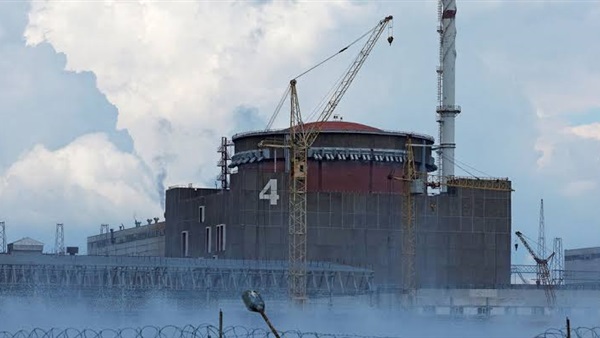Fighting around Ukraine nuclear plant ‘suicidal’, says UN

The UN has warned of the “suicidal” danger of fighting around Europe’s biggest nuclear power plant after Ukraine and Russia accused each other of shelling the site over the weekend, raising fears of a radioactive disaster.
António Guterres, secretary-general of the UN, called for international inspectors to be given access to the Zaporizhzhia plant in Enerhodar, central Ukraine, which was occupied by Russian troops in early March.
“Any attack [on] a nuclear plant is a suicidal thing,” Guterres said in Japan, where he attended a ceremony at the Hiroshima Peace Memorial on Saturday to commemorate the 77th anniversary of the world’s first atomic bombing.
Recent shelling near the power station is said to have damaged three radiation sensors, as well as power links.
Petro Kotin, the head of Energoatom, Ukraine’s state nuclear power company, called for a team of peacekeepers to be sent to the Zaporizhzhia site, which is still run by Ukrainian technicians.
“The decision that we demand from the world community and all our partners . . . is to withdraw the invaders from the territory of the station and create a demilitarised zone on the territory of the station,” Kotin said on television. “The presence of peacekeepers in this zone and the transfer of control of it to them, and then also control of the station to the Ukrainian side, would resolve this problem.”
The Kremlin has in turn criticised Kyiv’s forces for “extremely dangerous” attacks on the plant, and said today that western countries with influence over Ukraine should apply pressure to stop the strikes.
President Putin’s spokesman, Dmitry Peskov, said: “We expect the countries that have absolute influence on the Ukrainian leadership to use this influence to rule out the continuation of such shelling.”
Despite the shelling, the Zaporizhzhia complex is operating in “normal mode”, the Russian Interfax news agency reported, quoting the head of the Russian-installed local administration.
Armed by the West with longer-range Himars missile launchers, Ukraine has checked Russia’s advances in recent weeks and is threatening a counter-offensive on occupied territory in the south.
The precision missile systems wreaked havoc on Russian engineers as they tried to repair the crucial Antonovisky bridge over the River Dnipro today.
The Russians claimed yesterday to have destroyed the Himars launcher that had been striking the bridge to Kherson, and announced that the bridge would be reopened by the end of the week. However, video shared on social media showed new strikes overnight, and equipment burning on the bridge.
Yuriy Sobolievsky, head of the Kherson regional council, said: “The occupiers cordoned off the bridge from both sides, forbidding local residents to approach and are acting aggressively.”
Moscow has sent thousands of reinforcements from eastern Donbas to the south, but the Dnipro splits Putin’s army there in two. About 10,000 men on the west bank are at risk of being cut off from their supply lines by Ukrainian strikes against the three crossings under Russian control.
“The same fire control that we have been holding for several days in this direction worked out,” said Captain Natalia Humeniuk, spokesman for Ukrainian forces on the southern front. “It has its own results, with significant hits on both Antonovsky and Kakhovka bridges.”
British intelligence has said that Russia is very likely to be using “butterfly” mines, which can be mistaken for children’s toys, to prevent Ukrainian troops from taking back territory.
The Ministry of Defence said that anti-personnel mines, designed to kill and maim people rather than to destroy tanks, were almost certainly being used to prevent Ukrainian forces from moving around easily along Russia’s defensive lines.
Russia is believed to have tried to use PFM-1 and PFM-1S scatterable anti-personnel mines, commonly called butterfly mines, in the cities of Donetsk and Kramatorsk. These are “deeply controversial, indiscriminate weapons”, the MoD said in its daily intelligence update.
PFM-1s were used to “devastating effect” in the Soviet-Afghan War, the MoD said, where they maimed large numbers of children who mistook them for toys. “It is highly likely that the Soviet-era stock being used by Russia will have degraded over time and are now highly unreliable and unpredictable,” the ministry added. “This poses a threat to both the local population and humanitarian mine clearance operations.”
Justin Crump, an analyst at the risk consultancy Sibylline, said that the devices were designed to be scattered over a large area from the air or fired from mortars. They spin like a butterfly or petals, landing with a low impact, before exploding when triggered by movement. “They’re small but they will have sufficient blast damage to take off a foot,” Crump said.
Thousands of Russian landmines have been laid in Kyiv, Kharkiv, and eastern regions Donetsk and Sumy, according to Human Rights Watch.





